
Most hill runners and keen hillwalkers will know of the Ramsay Round, Scotland's original long-distance mountain challenge and answer to the Lake District's Bob Graham. But many don't realise that the creator of that Scottish classic, Charlie Ramsay, is Black. Why is this a surprise? Because hill running is a very White sport. There is much more ethnic diversity in road running than in trail running, and more in trail running than in hill running. Why is this the case; how can we change it; and should we be trying?
During lockdown last year, inov-8 ambassador and co-founder of Black Trail Runners (BTR), Sabrina Pace-Humphreys discovered for the first time that the Ramsay Round was devised by a Black man. She was shocked that this wasn't more widely known.
Some will ask why this matters. Ramsay ran the round in 23 hours 58 minutes in July 1978 because he was hardcore; it had nothing to do with his skin colour. This may be true, but Charlie is an example of the representation that is desperately needed by countless Black trail runners in the UK, wondering where they fit in and seeking a sense of belonging in the trail, ultra and fell running scene.
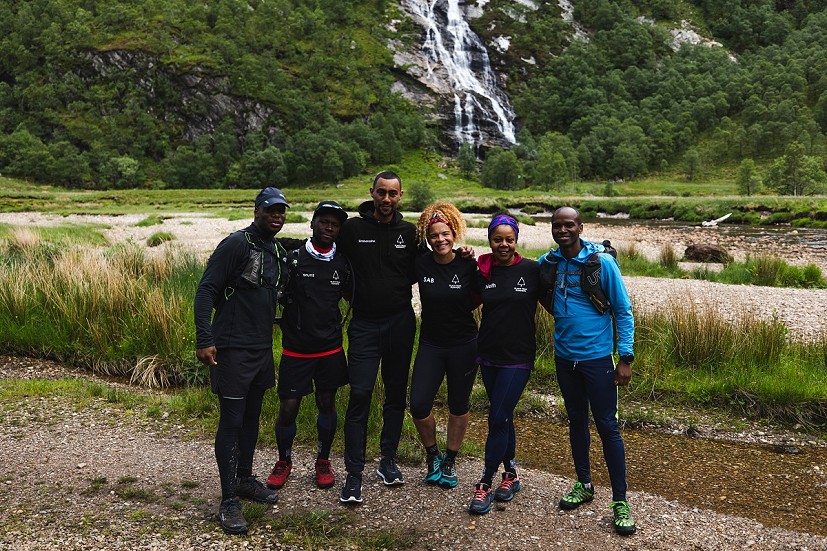
Following her discovery, and being half-Scottish herself, Sabrina found a new affinity with the Ramsay Round and felt compelled to create a Black Trail Runners challenge on these hills, aimed at raising the profile of Charlie Ramsay's achievement and the Black Trail Runners' mission to improve diversity in the UK mountains.
Our aim was to show Black runners – some of whom might be new to trails – what is possible. We need to normalise the presence of Black faces, Black bodies and Black joy in these amazing environments
The Challenge
The Ramsay Round is a circuit of 58 miles, over 24 summits and with a total climb of 8686m. The route includes Ben Nevis and 22 other Munros covering the Mamores, Fersit Hills, Grey Corries and Lochaber 4000ers.
Like the Bob Graham Round and the Paddy Buckley Round, the principal aim for most contenders is to complete it within 24h. However, Charlie Ramsay is quite clear that although his round was originally conceived as a sub-24h challenge, it does not have to be completed in this way to be enjoyed.
"Many have chosen to do the round in stages over multiple days or by climbing all of the tops on the round on different visits, without clock-watching and to enjoy the stunning views of Lochaber" he says.
Due to the remoteness of the Ramsay Round, it is not easy to break the round into three single-day stages without wild camping or using bothies. The former involves carrying a lot of equipment and reduces flexibility, and the use of bothies by commercial or large groups is not permitted. On this attempt the decision was therefore taken to leave the round each night and return the following day. This approach gave the team their best chance of rest and recovery, but it also significantly increased the overall distance and ascent profile of the challenge.
The team
It was important for everyone that the runners in the team included both men and women, and that there was a range of experience and ability in the group. The six runners were Nethilee La Croix, Simbarashe Mugomba, Leroy Valentine, Deo Kato, Mzukisi Tandathu, and Sabrina herself. All team members were new to the Scottish Highlands and some had never even been fell running before!
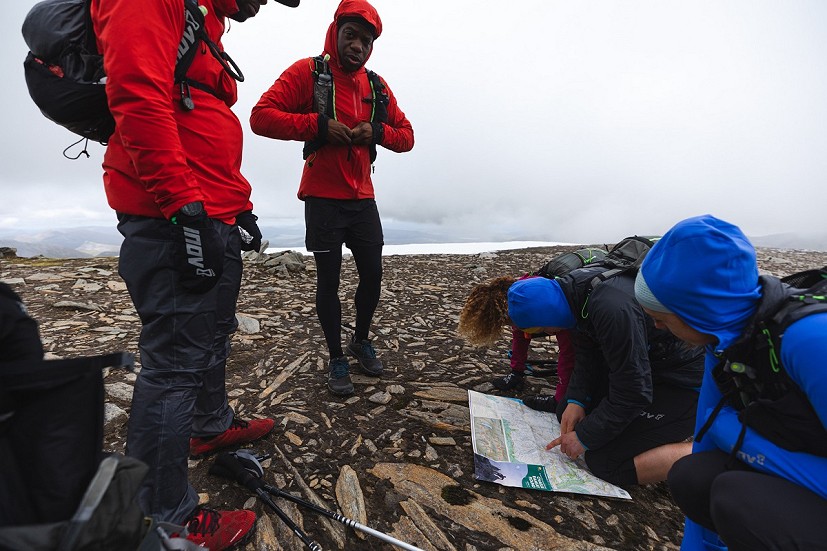
"Inclusivity should begin at grassroots level" says Charlie Ramsay "acceptance should not be based on ability, age, gender, background, race, sexual orientation or class."
Sabrina engaged with Charlie directly, meeting with him in his home and getting his advice on preparing her team for the challenge.
"This challenge was never about chasing records or FKTs" says Pace-Humphreys "it was about breaking glass ceilings on a mountain adventure that would test us to the limit as individuals but at the same time require us to work as a community team – representing for Black Trail Runners on one of the hardest mountain running challenges in the UK."
Representation is a self-fulfilling prophecy. You have to see it to be it
I got involved in the challenge when Black Trail Runners joined forces with our company Girls on Hills to plan the schedule and work through logistics of the event. We offered guiding and support on a voluntary basis to play our part in the wider aims of the charity. But the team had other allies too – inov-8 sponsored the event and provided kit, Ultra-X provided training plans and Harvey Maps delivered the official mapping. The team also benefited from nutritional advice from Renee McGregor. We had a fantastic film crew and photographer, all of whom became part of the journey.
"We are not here to engage, or support performative ally-ship" says Pace-Humphreys.
"If someone – whether they be an individual, an organisation or a corporate entity - really wants to help us achieve our aim to work towards ensuring 4.5% of participants in UK trail races are Black, then we need more than words; we need action.
"We don't need empty promises. We need individuals, companies and organisations to be ready to have uncomfortable conversations and to join with us in bringing to life initiatives that help us address the key barriers to achieving more diversity and more inclusion."
Let's do this...
From the minute I met the team it was clear that they shared something compelling – a conviction for their cause and a passion for this particular round. They jelled instantly and in the face of their very varied strengths and weaknesses, pulled together, driving each other on with support, camaraderie and priceless banter. And we needed that - because (unsurprisingly) the Scottish weather didn't exactly play ball.
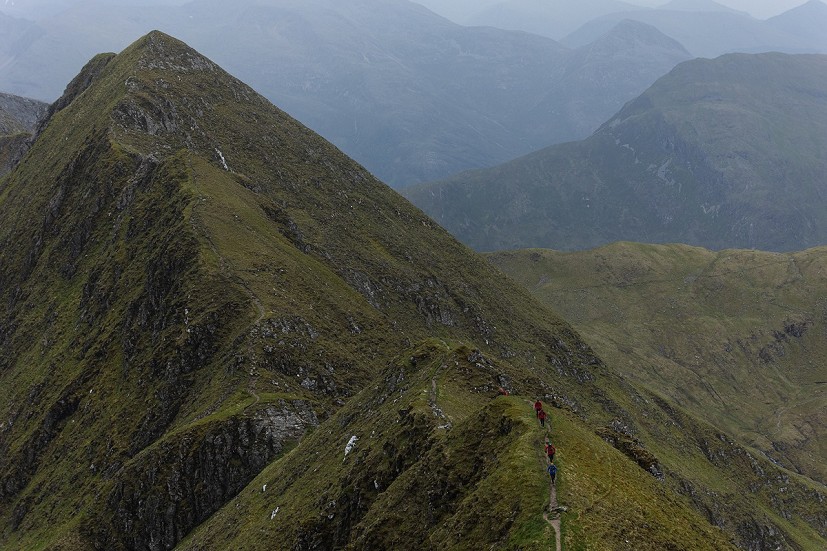
Day 1 of the challenge forecast heavy rain and gales of up to 60mph for the afternoon. In the face of this development, we reversed the schedule and opted to run the Mamores first (the shortest of the three planned legs). Given the deteriorating weather, we got out very early and ran east to west (clockwise on the round), starting at Kinlochleven and finishing with the most accessible hills above Glen Nevis.
In the end we were lucky and only had to battle the elements over Mullach nan Coirean (the final Munro of the day) before descending to the Glen Nevis Youth Hostel. Usually this would be the start and finish location for the Ramsay Round, but we had accepted early on that we would need to be flexible and work with the weather, rather than against it.
Some runners climbed all the peaks on Day 1 and others skipped the out-and-backs on the ridge to keep the team moving before the weather set in. We ran 37km and 2600m over 8 Munros. For most members of the team, the Ring of Steall section was their first ever taste of scrambling.
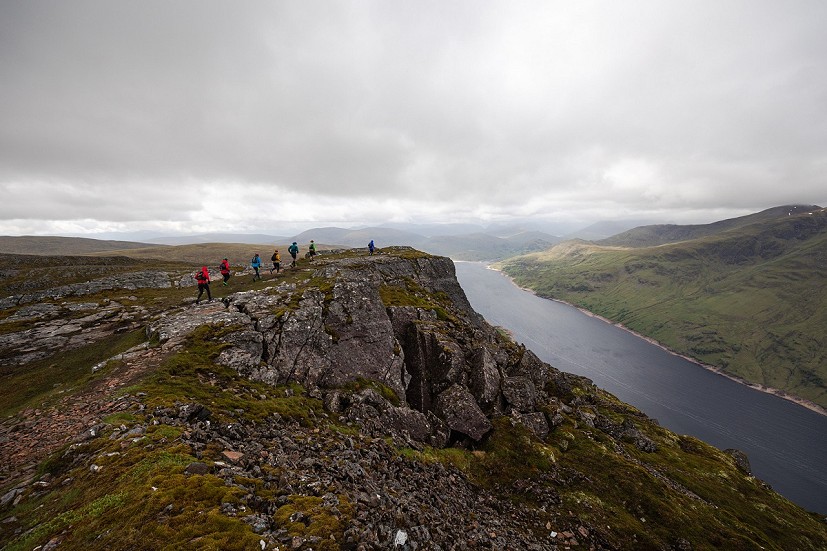
Day 2 dawned dry and bright but windy, and five of the team started out with a relaxed approach to climbing Stob Coire Sgriodain from Fersit. The plan was to climb the three Munros east of Loch Trieg before bagging the two outliers on the Mamores ridge and descending to Glen Nevis. It was an ambitious plan, and one that ended with a strategic withdrawal to Corrour Station in a bid to save the legs for the team finale over Ben Nevis the following day. We had dropped two Munros on the challenge schedule but morale was boosted by reuniting with the sixth runner Nethilee La Croix who had (with a guide) covered the valley section from Loch Trieg to Loch Eilde Mor - following in Charlie Ramsay's footsteps along the Abhainn Rath, to link the Fersit hills with the Mamores for the team.

Day 3 saw the full BTR crew climb Ben Nevis together in the face of rain and low visibility. Inevitably there were no views but it didn't matter because they had made it to the highest point in the UK together – and for a reason. But standing on the summit with Deo's makeshift Representation Matters sign, the group were (for once) short on words – unable to articulate the magnitude of what this meant to them. In the end, an impromptu huddle seemed the only thing to do, but then the tears came – the kind that get you right in the feels, and soon we were all sobbing into the mist!
Following this emotional highpoint, two of the runners descended the way they had come (due to fatigue/injury) and the rest continued down to the CMD arete – determined to push on with the time they had left. The remaining runners revelled in the dramatic terrain and marvelled at the panorama of hills that they had already climbed – amazed at how far they had come. But as legs became wobblier, a group decision was finally taken to leave the Grey Corries and Easians for another day. The runners had climbed the impressive Lochaber 4000ers and well and truly got the bug.
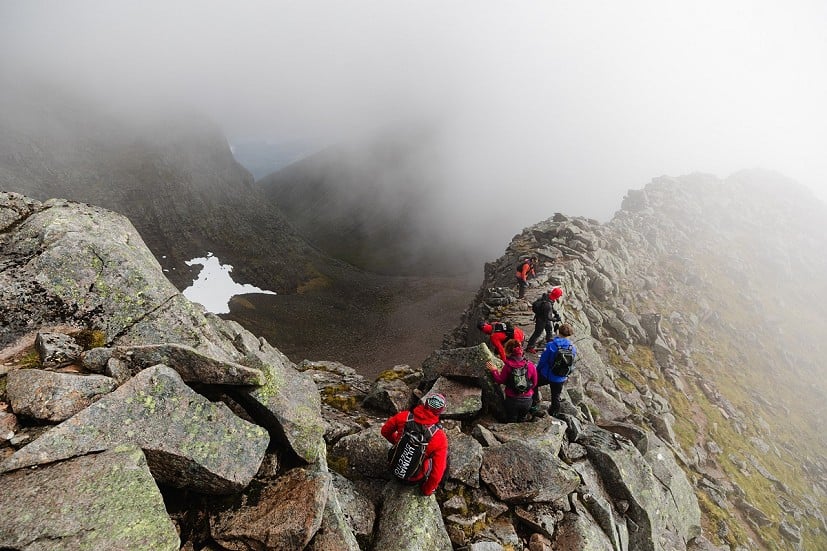
The guides showed the way off the hill and brought all the team members together for a final run-out from Glen Nevis. When we passed beneath the thunderous Steall Falls we took a moment to share a few hugs and soak it all up; what they had achieved, the journey everyone had made personally, and what it meant to be a team of Black runners in the Scottish Highlands.
Some of the runners could have completed the whole challenge easily, others pushed beyond their comfort zones to achieve more than they ever thought possible. Did it matter that they hadn't completed the full round? Not one bit. They did what they came to do.
"Our aim was to show Black runners – some of whom might be new to trails – what is possible" says Pace-Humphreys.
"Our mission is accomplished if we inspire even one Black person to try trail, mountain or fell running. We are working hard to change the narrative for future generations of Black trail runners – Black children who are future amateur and elite athletes. To do that we have to keep showing up. Keep coming to these places. We need to normalise the presence of Black faces, Black bodies and Black joy in these amazing environments."
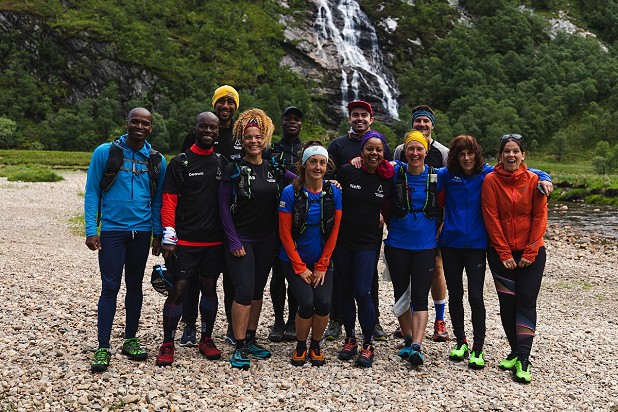
Representation matters
Running in the mountains is one thing, but racing is quite another. The start line of any fell race is a whitewash, as well it might be, in a sport that has its origins in competitions between shepherds and agricultural labourers in 19th century Britain. From these festive beginnings it morphed into professional/paid 'guide racing' from the 1850s onwards. Eventually amateur fell racing found a footing, and fell running was declared an 'open sport' in 1992. Today anyone can enter whatever races they like. You don't have to be a super-fit athlete, experienced runner or even a member of a club to enter a fell race. But despite the egalitarian ethos and a welcoming community vibe, fell running, like many mountain sports, has been slow to see a change in the diversity of feet on the start line. This is not a criticism of what is, at its very heart, a forthright and accepting sport, but instead a recognition that there is still work to be done.
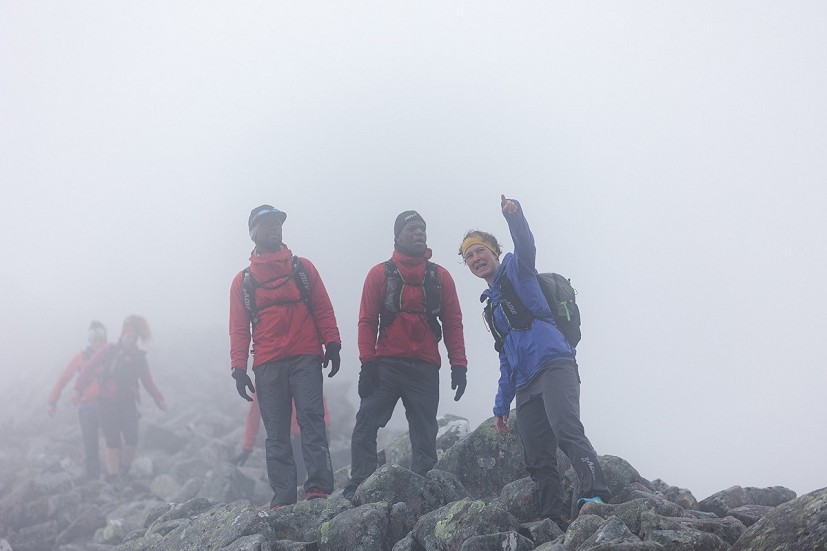
Starting in the 1940s, Black immigrants to the UK were excluded by landlords and other housing authorities, and forced into lower-quality homes in large industrial cities – with the effect that most Black people lived far from the trails and fells of the Lake District and Scotland. Today, even though 1 in 22 people in the UK are Black or mixed race, the population is still surprisingly urbanised, with Black runners having on average less access to green spaces. The ratios we see on the streets of our big cities are not reflected in the runners on our rural trails and mountains. Why? - because representation is a self-fulfilling prophecy. You have to see it to be it. And that's only part of the story.
Let's take gender by comparison. Some fell races allowed women to compete as far back at 1953 (namely the Lake District Mountain Trial), but it wasn't until 1977 that women's amateur events were sanctioned under Amateur Athletic Association rules. Even after women were allowed to compete, female participation didn't increase immediately. Instead, it has taken a gradual evolution in clothing manufacture, race organisation and athlete representation for female participation to reach its current (and highest ever) level at 17-25% - in a population which is 50% women.
Office for National Statistics data from the 2011 Census shows that 3% of the UK population identifies as Black, while another 1.5% are mixed race White/Black. It is clear that significant positive action is required before these numbers are reflected in race entry data.
It's simply not true that all you have to do to be a trail runner is put on a pair of trainers and show up. First you need to have the notion, the slightest inclination – and this is hard when you don't fit in; when you don't recognise yourself in the other participants, when it doesn't seem to be aimed at you or when you stand out as a newcomer or a novice.
"The biggest challenge for us is the reticence to listen to the lived experience of Black and Brown people. It continues to be a massive daily challenge for us. Our voices are openly discredited, often with ignorant cliches such as 'the trails are open to everyone', 'the trails do not see colour' and other openly racially aggravated comments centering around 'Black Trails Matter' and 'self victimsation'. We are accused of creating a divide that didn't exist. Such sweeping statements are not evidence-based and are almost always spoken from a position of white privilege" says Pace-Humphreys.
Black Trail Runners' mission
Black Trail Runners was created by Pace-Humphreys in July 2020, along with co-founders Sonny Peart, Rachel Dench, Marcus Brown, Phil Young, and Donna Richards. Now a registered charity, the group aims to increase the inclusion, participation, and representation of Black people in trail running by way of working to address barriers across three central tenets; access, skills, and representation.
If representation is about unlocking the door, then access is about throwing that door wide open so that everyone can come in, regardless of their appearance, background, financial status or ability. 'Skills' is more to do with equipping newcomers with the knowledge and confidence they need to become a part of that community. This might take the form of navigation skills, training advice or race experience.
BTR's following is growing all the time but the major influencer is still the trail running industry itself. So what can brands and organisations do to play their part across these three areas?
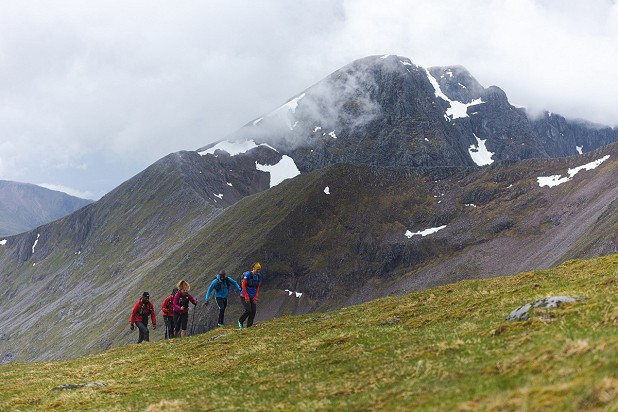
"Be honest" suggests Pace-Humphreys.
"What have you done, or what are you currently doing to increase the number of Black people in the sport? A good place to start is by looking inwards; cleaning your own house! Ask questions such as 'how many people of colour do we employ either full time, part time or freelance? How do we market to diverse communities and how are those communities involved in that decision making process? How are we addressing access, skills and representation? What do we need to do, or who do we need to consult with, to do better?"
As individual runners and mountain enthusiasts we can all do our part too. We can show our support in conversations, debates and forums. We can be empathic and proactive about change. We can be allies and help counter the voices of those who think they know what others need. We need to explain that just because you don't see or experience 'soft barriers' for yourself, it doesn't mean they don't exist for others. It just means that you're one of the lucky ones. By supporting initiatives like the Black Trail Runners' Ramsay Round challenge, we can all take a positive step towards inclusivity and diversity in our sport, and in the hills in general.
- INTERVIEW: Anna Wells on the Winter Munro Round 25 Mar
- Top Tips: Camping With Kids 12 Jun, 2023
- REVIEW: Book Review: Voices From the Hills 19 May, 2023
- My Move to the Mountains: Life in Lochaber 16 Mar, 2023
- Hut to Hut in the Tyrol - A Family Adventure 30 Aug, 2022
- INTERVIEW: Nicky Spinks on the Lake District 24 Hour Record 9 Sep, 2021
- INTERVIEW: In pursuit of purity: going solo on the Winter Bob Graham Round 25 Feb, 2021
- Desert Island Peaks: Keri Wallace 18 Jan, 2021
- Walk Before You Run - winter skills for hill runners 21 Dec, 2020
- FEATURE: A Celebration of Women in the Hills 8 Mar, 2020

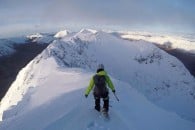

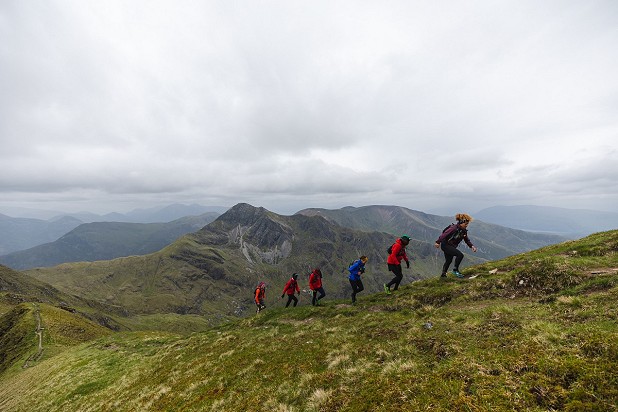
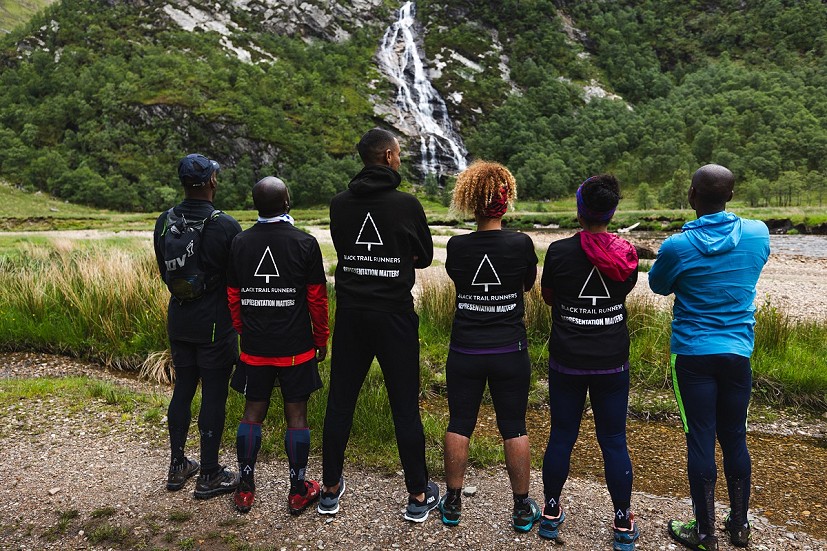





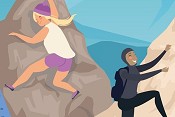
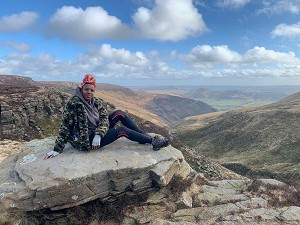


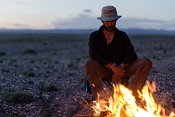
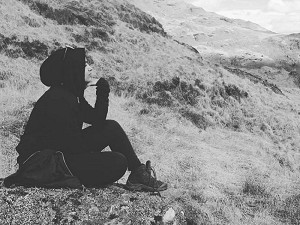
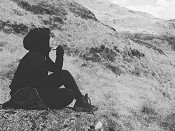
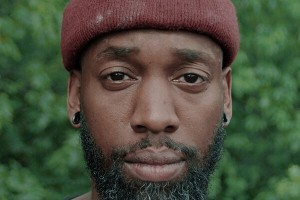
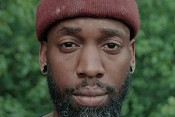

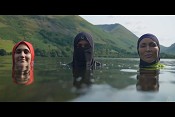
Comments
Thanks for this. Good to see people getting out there, pushing their limits and having fun. I would normally baulk at anyone going out on hills without experience so good to see guides etc. were available. (I was on the Ramsey at the weekend for the first time and despite experience in the hills still felt I was pushing my experience at times - especially on a wet, misty and dark CMD arête).
Many thanks for the section at the bottom to clarify representation and other important topics. The following line is a good summary: "But despite the egalitarian ethos and a welcoming community vibe, fell running, like many mountain sports, has been slow to see a change in the diversity of feet on the start line. This is not a criticism of what is, at its very heart, a forthright and accepting sport, but instead a recognition that there is still work to be done."
Over recent years I have seen an increase in diversity in fell races, especially in the female ranks and in the bigger Lakes Classic races. It's great to see. It's an incredibly welcoming sport with people taken on their personality and character. There are initiatives to give people more experience (e.g. navigation courses, coaching, wilderness first aid). Fell Running in its nature is non-commercial and doesn't actively promote itself to runners (one of several differences to trail runners), doing so not really being sustainable to the sport. It takes the approach that people will fall into the sport if they are interested - though as you also point out historical and societal reasons do make this less likely.
As I often note on these boards, it is important to delineate between fell running and trail running as they are very different, both physically and organisationally.
I'm impressed that the article and the first post have received dislikes. Would anyone care to explain why?
I would love to see some of the top Ethiopian/Kenyan track runners move to fell/trail running after retiring from the track, rather than moving to road marathons. I suppose it'll never happen unless financial incentives change, but it would be awesome to see someone like Bekele having a go at one of the big rounds.
There's a core of east-african runners compete in the big european trail races and the WMRA events. Prize money is available so it's worth their while.
Fell/Skyrunning type events tend to be the preserve of Europeans and North Americans (with some exceptions)
That's cool, I'll have to look those up - do they tend to dominate those races in the same way that they do 5k-marathon in traditional athletics?